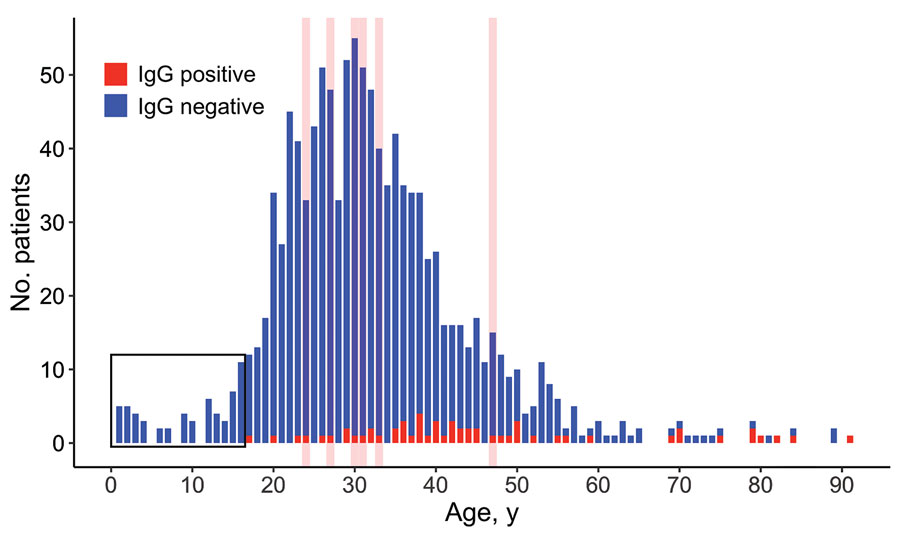Volume 26, Number 10—October 2020
Dispatch
Silent Circulation of Rift Valley Fever in Humans, Botswana, 2013–2014
Figure

Figure. Number of Rift Valley fever virus IgG-positive IgG-negative human serum samples by age at time of testing, Botswana. The overlaid red lines represent ages of patients who also tested positive for Rift Valley fever virus IgM. No patients <17 years of age tested IgG positive for Rift Valley fever virus (black outline).
Page created: June 30, 2020
Page updated: September 17, 2020
Page reviewed: September 17, 2020
The conclusions, findings, and opinions expressed by authors contributing to this journal do not necessarily reflect the official position of the U.S. Department of Health and Human Services, the Public Health Service, the Centers for Disease Control and Prevention, or the authors' affiliated institutions. Use of trade names is for identification only and does not imply endorsement by any of the groups named above.